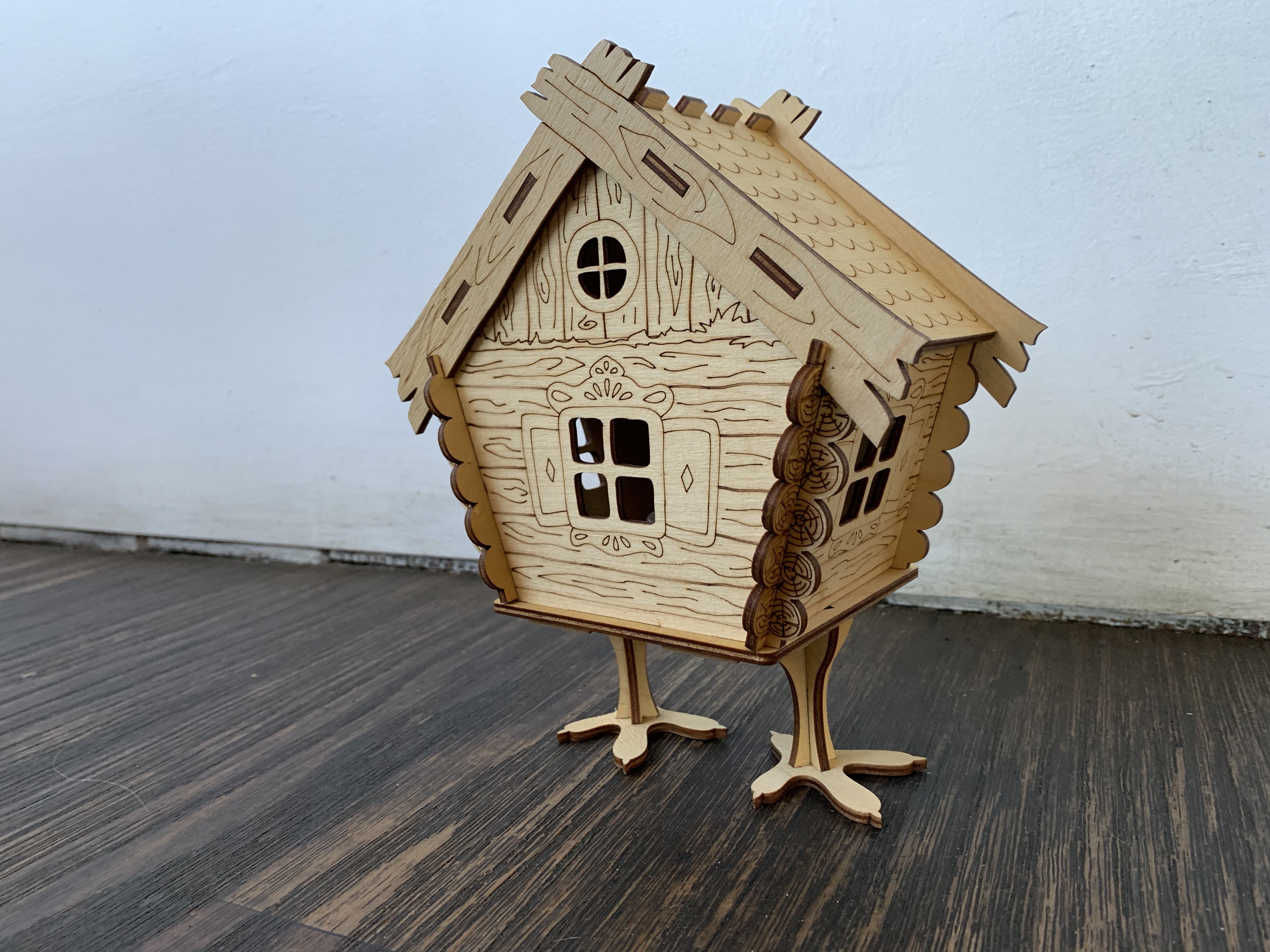Baba Yaga: The Scary Witch of Slavic Folklore
Table Of Content

It was customary to tell skazka, folktales, at feasts and weddings as well as share them during times of work or rest at home. She plays a cultural role as domestic instructor, demonstrating to young women and men what moving to a new household is like, and what tasks they need to master to become eligible husbands and wives. The story demonstrates Baba Yaga's power over morning, day and night.
The Legacy of Baba Yaga: Lessons and Reflections
Depending on the region and people, this can be a term of endearment or even an insult. It essentially points to the fact that the woman is in her elderly years and may even be ugly or misshapen, to some. This part of her name is a little harder to translate and understand.

The Lasting Legacy Of Baba Yaga
Instead of birthing and raising children, the witch eats them. She does not marry anyone or put the needs of other people above her own. Instead, Grandmother Witch is deeply selfish to the point of being evil. Though Baba Yaga is not exactly depicted as a kindly grandmother in this particular story, her “gift” ultimately ends up helping Vasilisa in the long run. The fiery skull burns down Vasilisa’s house, killing the evil stepmother.
Storybook Style — 1920 to 1930s
Baba Yaga is one of the most famous, yet confusing, witches in Slavic folklore and children’s fairy tales. If you run into her, you can’t be sure whether she will eat you or speak tenderly to you and grant you your wishes. The legend of Baba Yaga probably arose when the religions of Europe contained a pantheon of gods and creatures, both of which controlled the forces of nature and the destiny of man. No one knows for sure when or where her story originated, however, it appears that she has been a part of oral tradition in Northeastern Europe and Russia for millennia.
After Vasilisa completes several tough chores, Baba gives her a fire in a skull lantern and lets Vasilisa return home. That there are multiple Babas Yaga is made more explicit in stories in which there are literally multiple Babas Yaga, such as "The Maiden Tsar." Baba Yaga sends her home with a skull containing the fire she was sent to fetch, and once it is brought into the house, it burns the evil stepmother and stepsisters to ashes. Afterwards, Vasilissa and her doll leave the house, she becomes a seamstress and, with the doll’s help, impresses the king so deeply that he falls in love with her, and they are married, living happily ever after. According to the World History Encyclopedia, Baba Yaga shares several characteristics with an early Slavic goddess of death. Called Iagaia Baba, the underworld goddess sat atop an iron mortar and carried a pestle made from the same material.
The house also acts as a powerful symbol of protection and isolation. The surrounding fence made of human skulls serves as a deterrent, warning trespassers of the consequences they may face. Baba Yaga’s character is quite a complex one, with her being described as a paradox at best. In some stories, she offers help and advice to young people; in other stories, she is said to severely punish bad people. This is why folklorists like Russian scholar Vladimir Yakovlevic Propp described Baba Yaga as one who tests the protagonists in order to bring out the best out of them. Other authors also confirm the many-faceted nature of Baba Yaga, as she can be in one instance a child-eating monster and in the other instance a helpful, kind old woman who dishes out very good advice and even gifts.
And the lock on the fence gate is made from the teeth of a human jaw. Similarly the door is said to only open when a magical phrase has been uttered. The magical phrase goes as “turn your back to the forest, your front to me.” This depiction of Baba Yaga’s home reinforces the notion of her being a cannibal in the folklore. One of the more famous of the Baba Yaga stories features the main character not as the old woman herself but a young maiden named Vasalisa.

Tales and Stories of Baba Yaga: A Journey into the Forest
From sorting grains of barley to retrieving fire from the deepest depths of the forest, each task tests Vasilia’s resilience and determination. Vasilia embarks on a perilous journey, facing the otherworldly powers of Baba Yaga and the daunting tasks she sets. The encounter with Baba Yaga transforms Vasilia, leading her to return home with newfound strength and a magical skull that emanates light from its eyes. Through these narratives, we gain insights into the mythical encounter between Vasilia the Beautiful and Baba Yaga, as well as the challenging tasks and trials Vasilia faces.
It also gives us an idea of what purpose the Baba Yaga tales might serve. Prepare a feast for 12, clean the courtyard and house, prepare wheat, wash linen and sweep. Bravely, Vasilissa bows deeply, asking for light as her stepsisters had instructed. She moves them all to a new home near the dense forest where Baba Yaga lives. Every night, Vasilissa secretly feeds the doll and asks its advice.
Old witch tales come to a boil in ‘Baba Yaga’s Assistant’ - The Boston Globe
Old witch tales come to a boil in ‘Baba Yaga’s Assistant’.
Posted: Thu, 30 Jul 2015 07:00:00 GMT [source]
Illustration serves as the front cover of the book in the series Tales published around 1899. This grandmother, known as Baba Yaga, may remind some of another old woman who lives in a forest and eats children. Indeed, Baba Yaga’s story has echoes of Hansel and Gretel, with a Slavic twist. But some think that this character is even scarier than the villain from Grimms’ Fairy Tales.
According to legends dating back to at least the mid-18th century, Baba Yaga is a witch who resides in the forest. She usually uses a magical mortar and pestle for transportation, but sometimes flies around on a broom. Located in the remote part of her forest, Baba Yaga’s wooden hut is believed to be as hideous looking as the old witch herself.
The show, hosted by Emily Zarka, Ph.D., takes us on a journey to discover a new monster for each new episode. Monstrum looks at humans unique drive to create and shape monster mythology through oral storytelling, literature and film. The mortar and pestle that Baba Yaga uses to get around, they were essential tools for the everyday tasks women were in charge of in Slavic culture. At that moment, a man clad in black with an ebony stallion seeming to beckon the oncoming night sky disappears at Baba Yaga's gate made of men's legs.
During the day, a white horse and a red horse may be seen outside her hut. It may also be surrounded by other wildlife including birds, squirrels, snakes, etc. She resides in a magical hut located deep within the forest, which stands on chicken legs and constantly moves. Baba Yaga’s ability to fly in a mortar or iron cauldron, as well as her association with the realms of life and death, adds to her mystical allure. When the Baba Yaga tasks the girl with separating a pile of grains, Vasilisa's magic doll tells her to rest and let the doll take care of it.
The moral of her story seems to be that anyone who possesses a loving and honorable heart can overcome even the worst evil. Surely, any story that can teach that to our children should endure. Meanwhile,in Season 2 of ‘The Witcher’, the antagonist Voleth Meir (Deathless Mother) borrows some features from Baba Yaga (her hut stands on the legs of basilisks – a kind of hellish chicken). But there's no way around the fact that there's a hit action franchise where the main character's nickname is "Spooky Grandma." Both for us as we conjure whichever version of Baba Yaga that suits us best, and for the legendary woman and her own powerful potential.
Moorish tile and arches from the Arabian Nights, or intricately carved woodwork straight out of the Russian fairy tales about Baba Yaga, would not be out of place. As grandmotherly adviser or cannibalistic witch, pagan earth goddess Baba Yaga is a paradox, which might be why she's so fascinating and even beloved. Telling stories was an essential part of life for the East Slavic and Russian peoples whose folklore was popular in all social classes.
I have truly wondered about this feature and the only theories I’ve come up with are a. The iron nose is a nod to clairsalient (psychic smelling) abilities OR showing the spirit’s unfailing primal instinct. A mortar so big one could sit inside it, with a pestle just as massive – such things can only surprise modern citydwellers. In Russian villages, a mortar and a pestle were just as common as a broom or an oven fork. The process wasn’t very difficult, but required a lot of time, which was why it was often done by old women.
Comments
Post a Comment